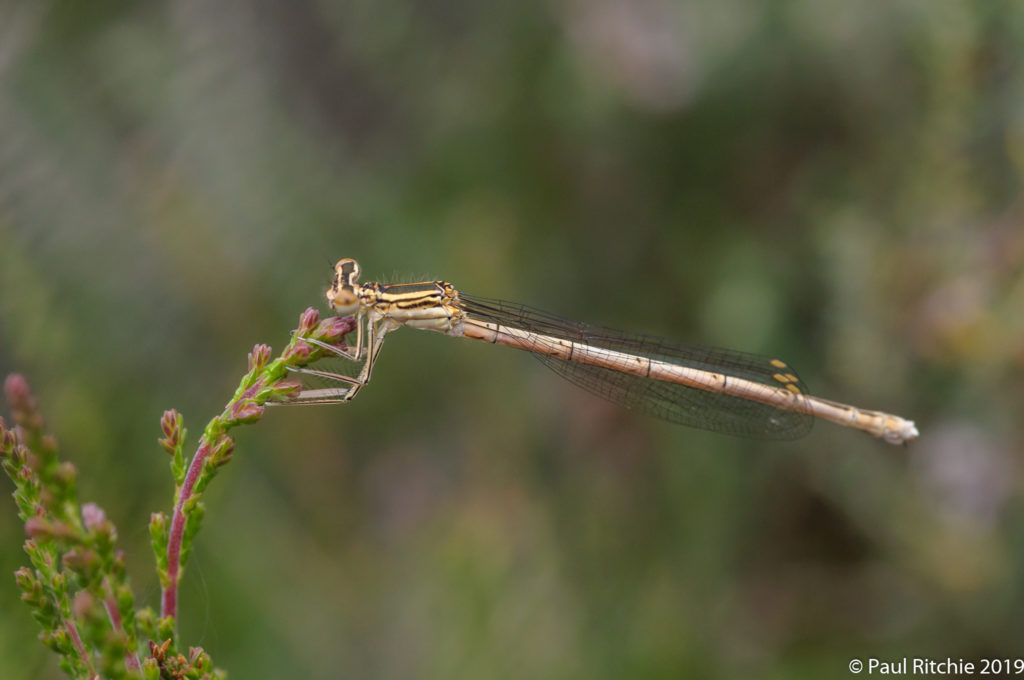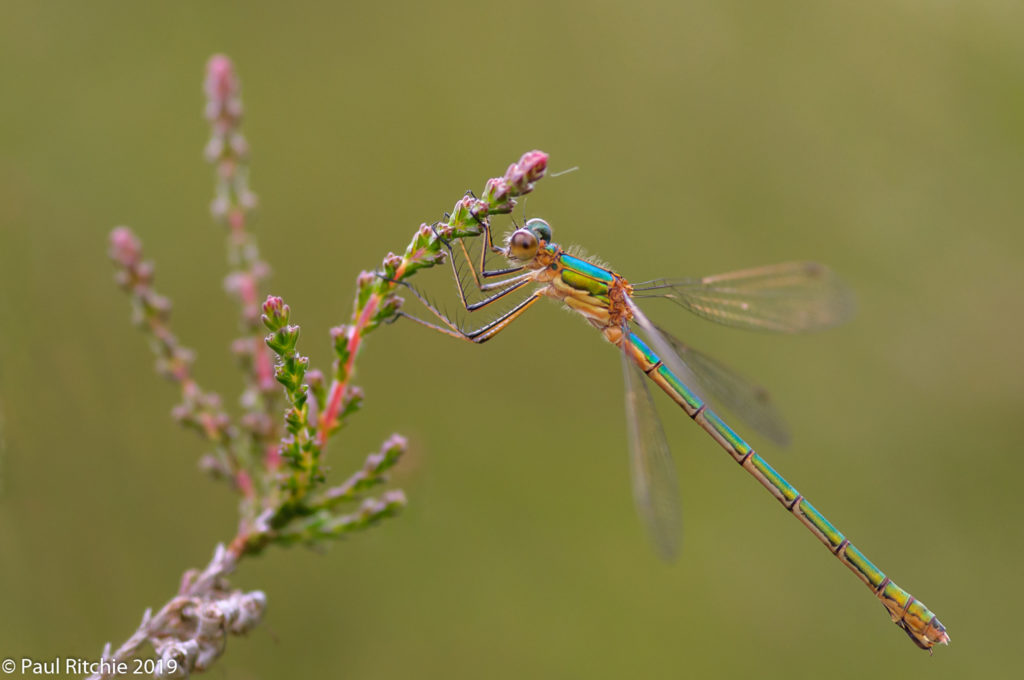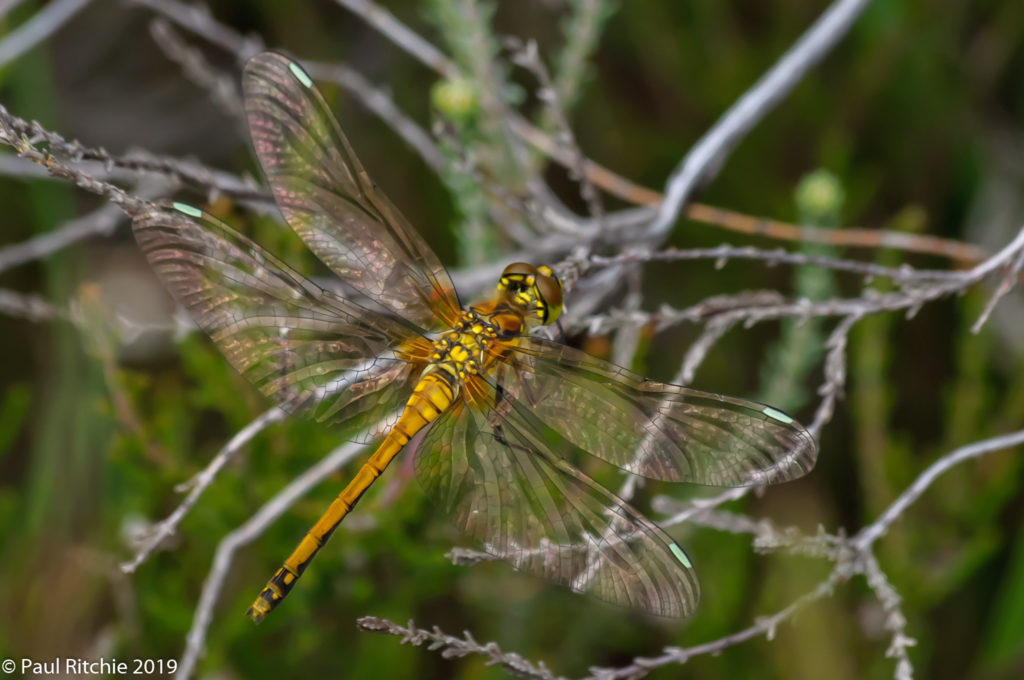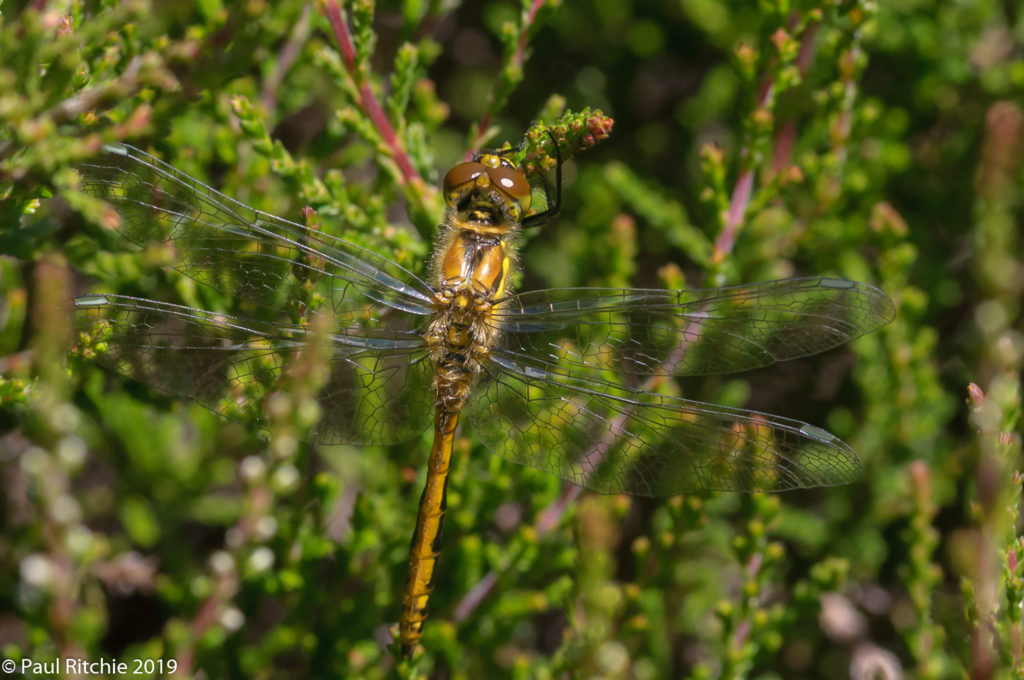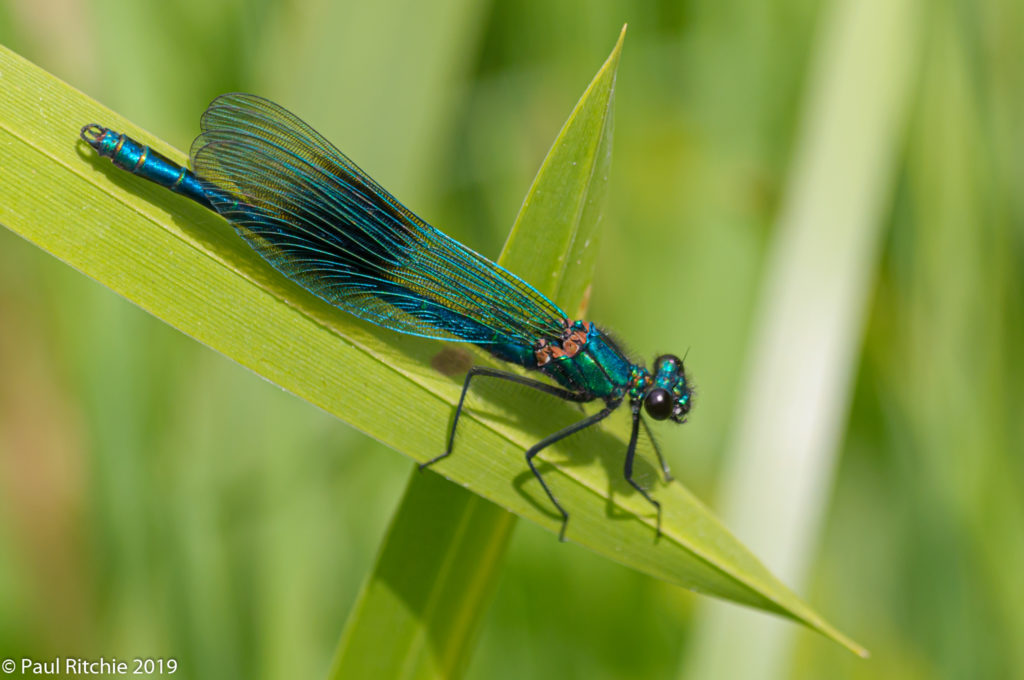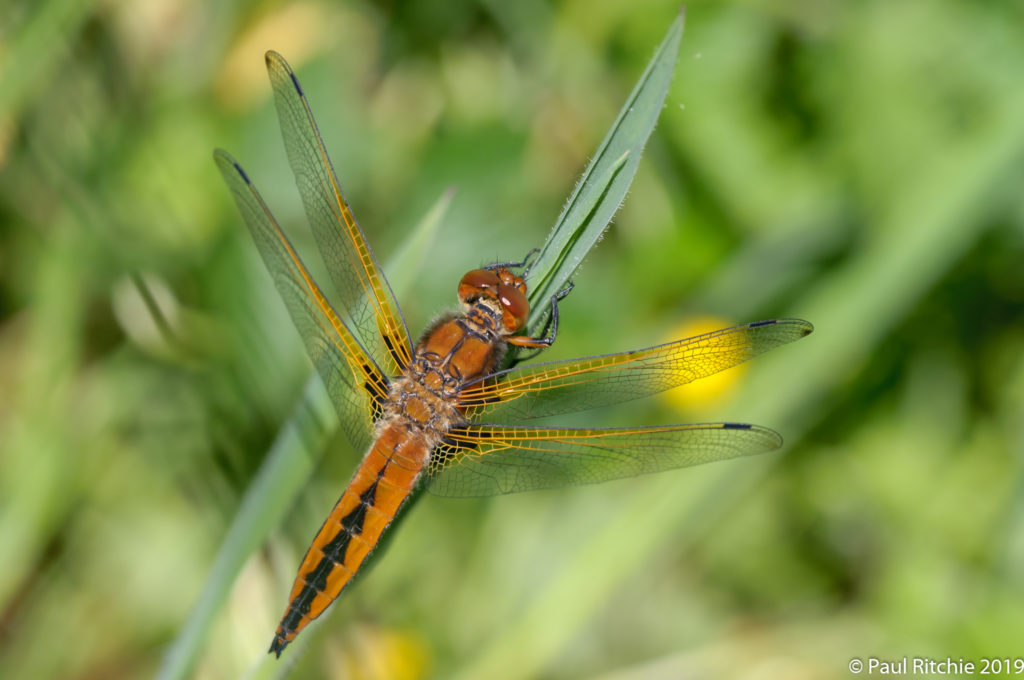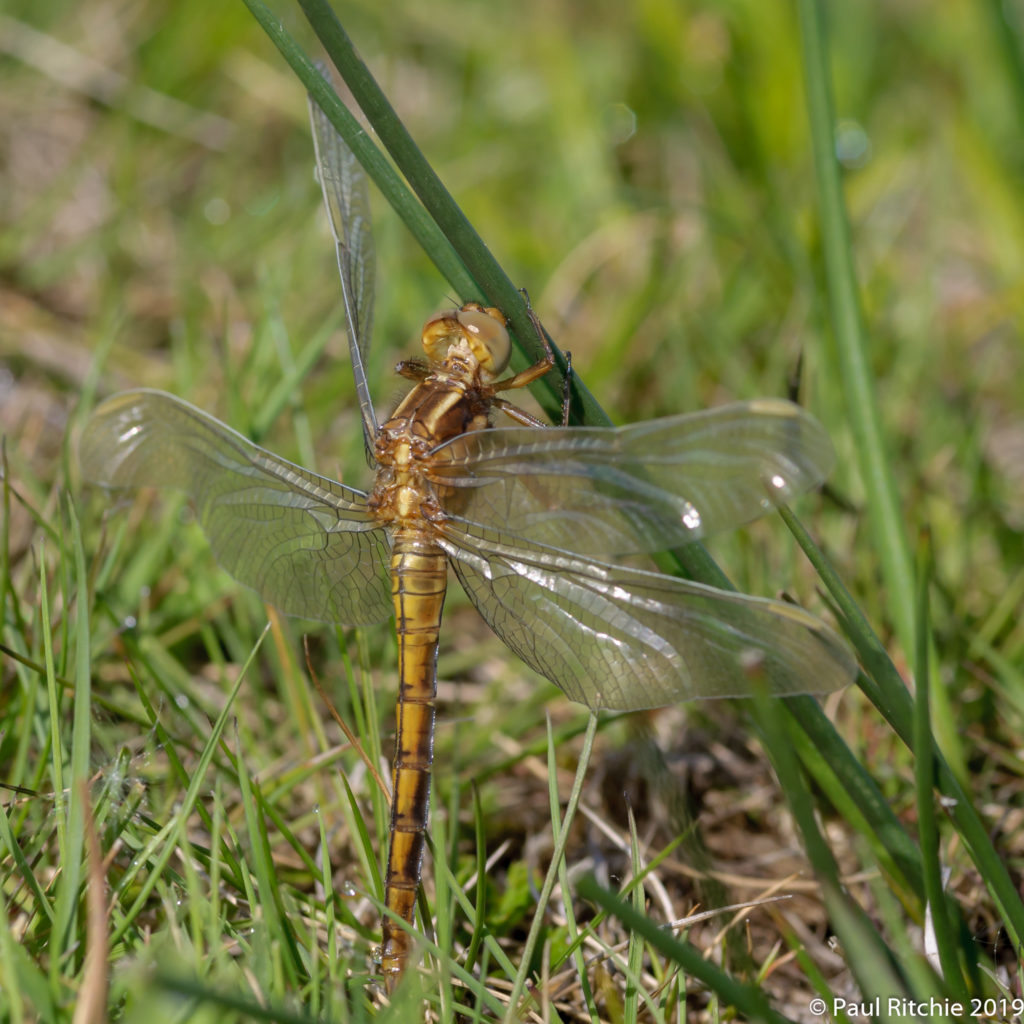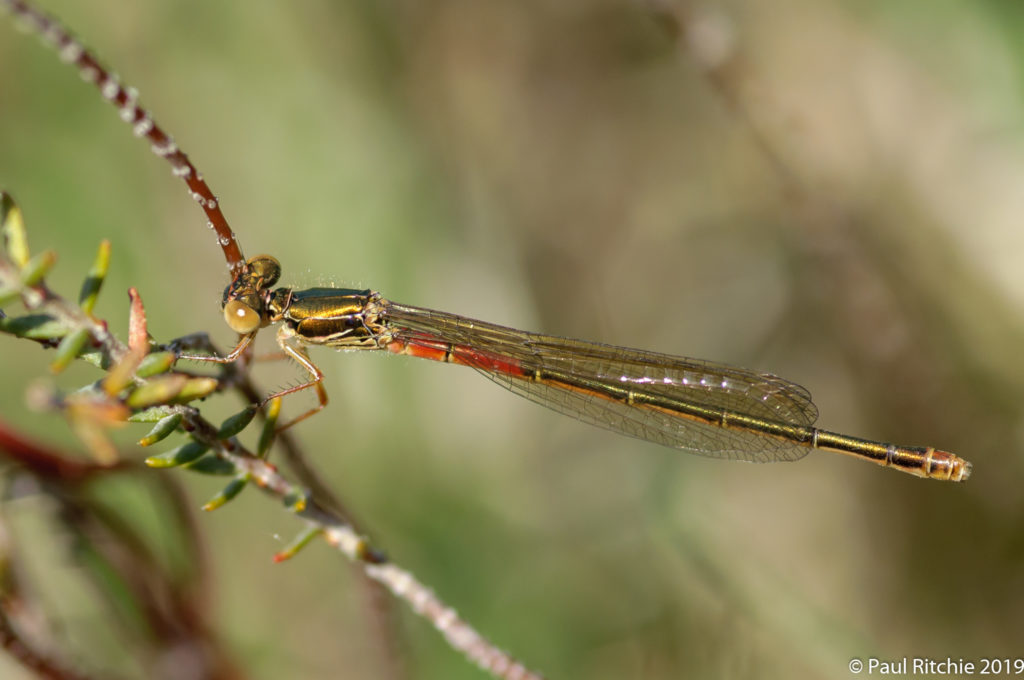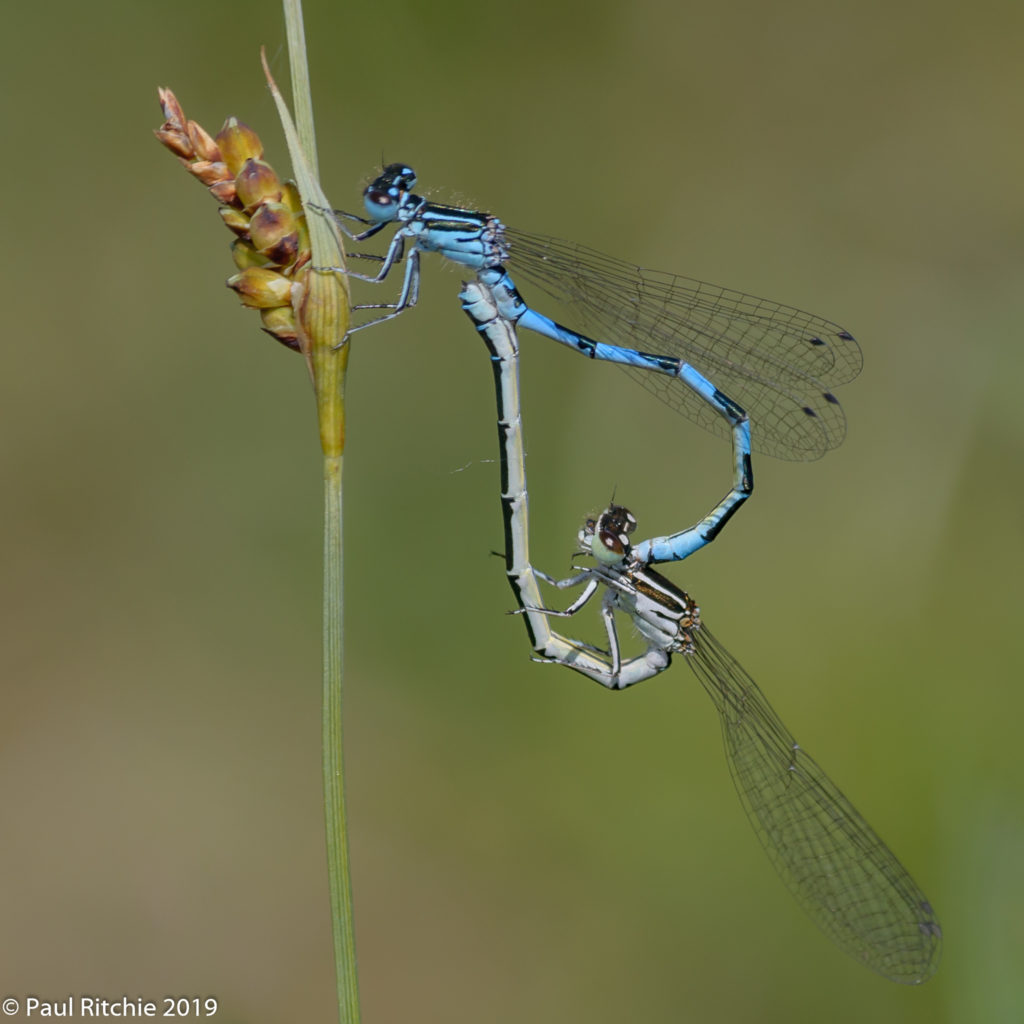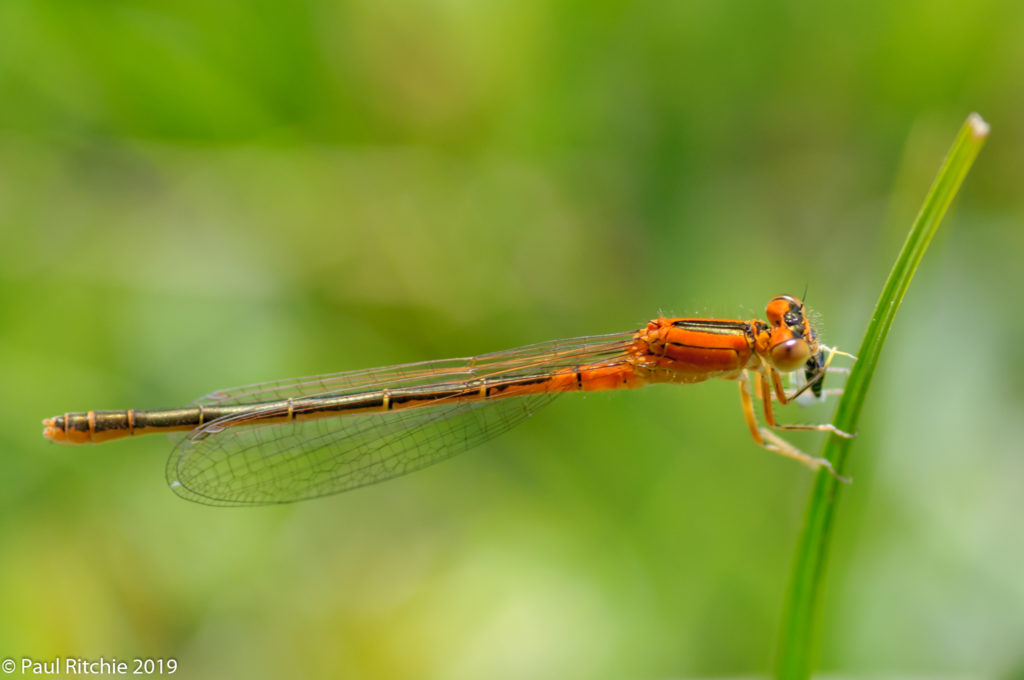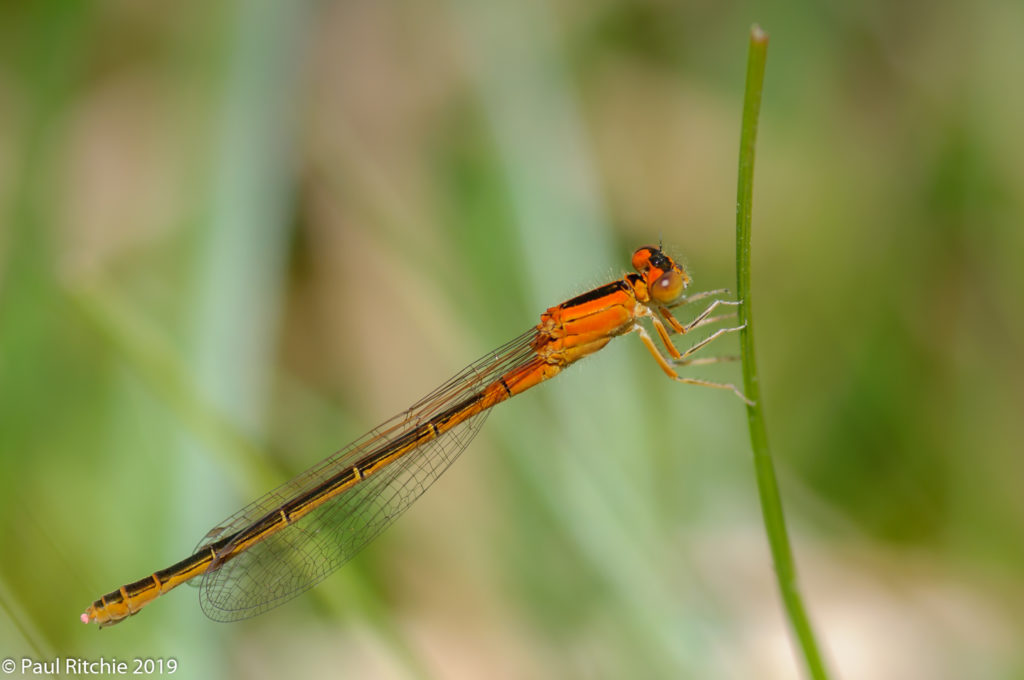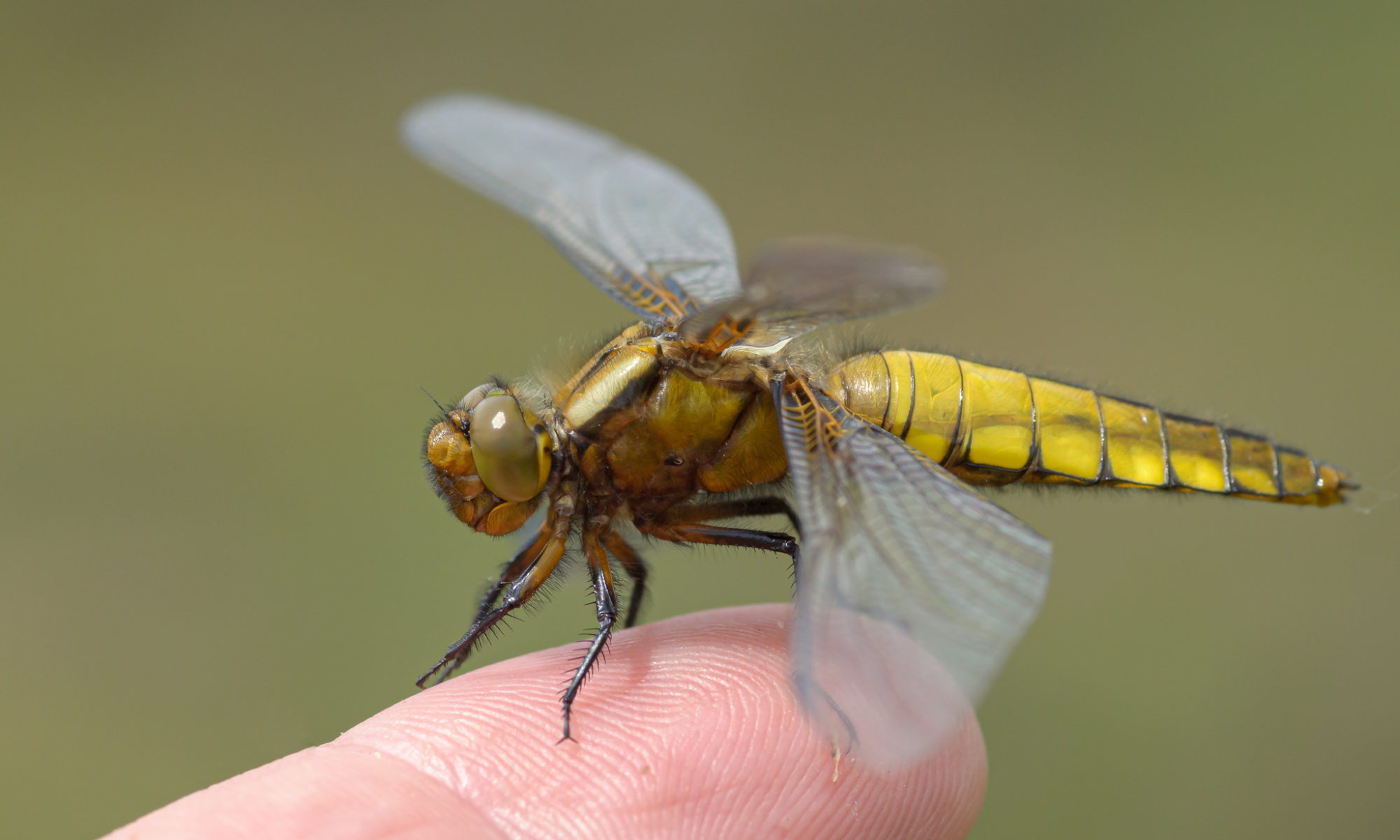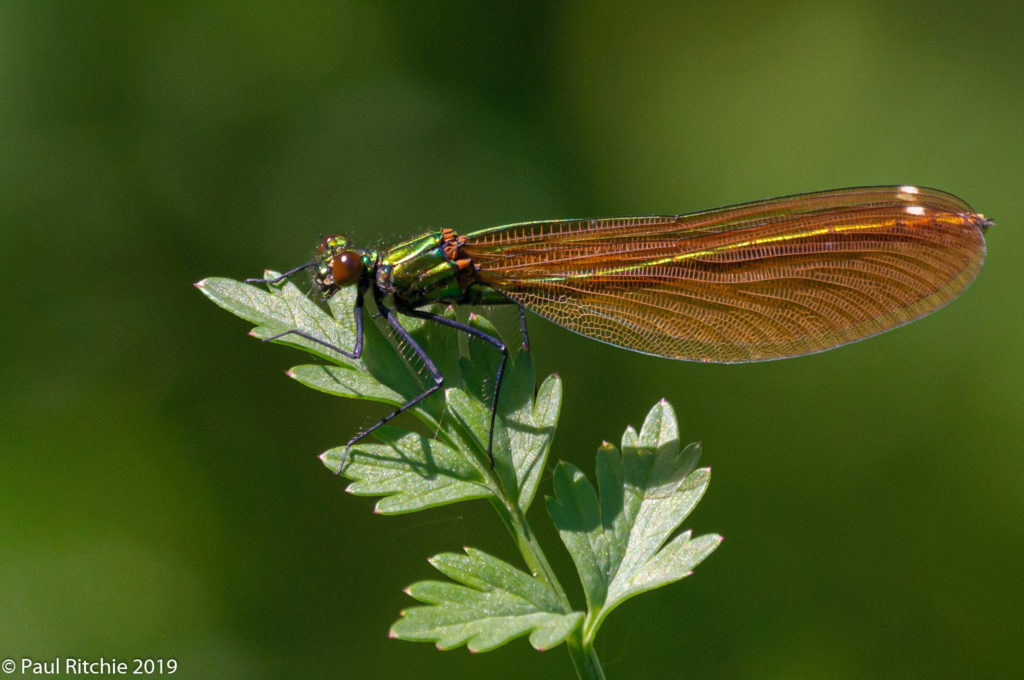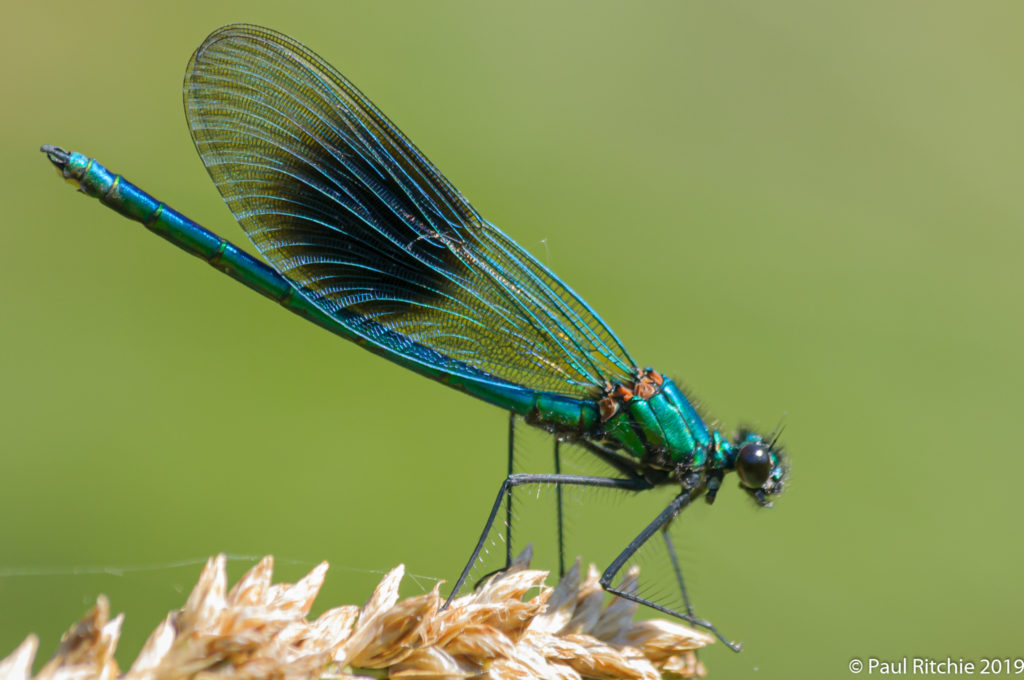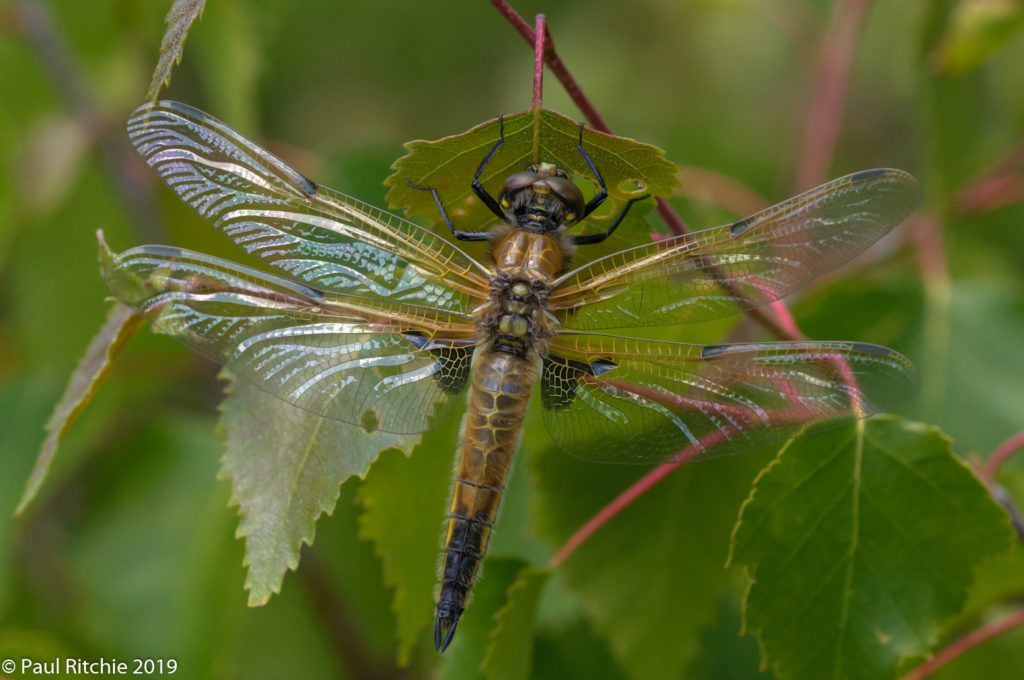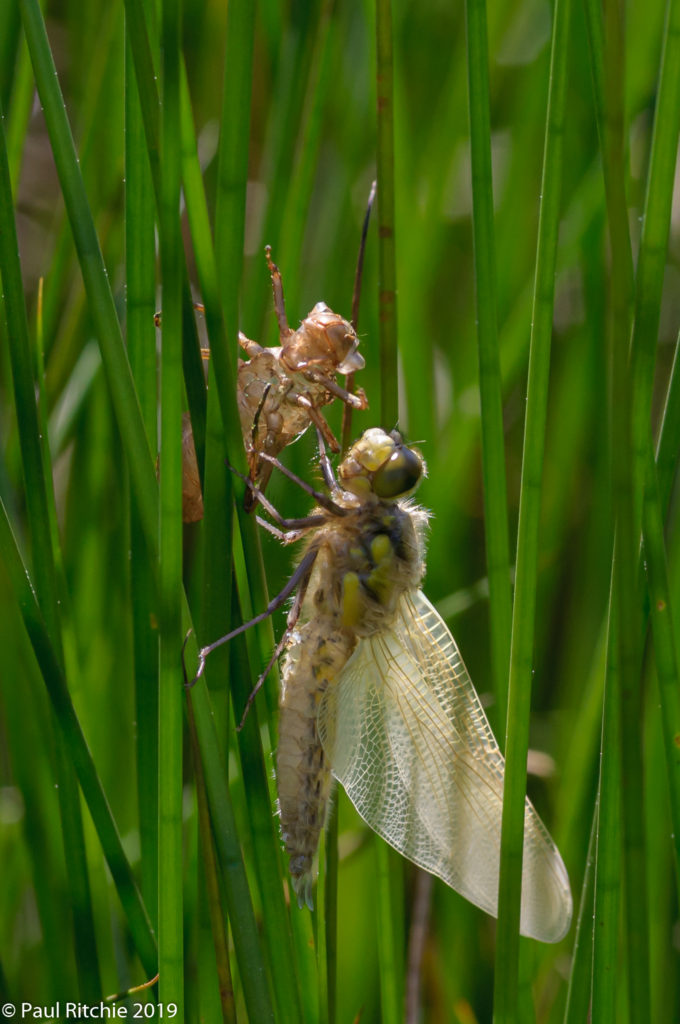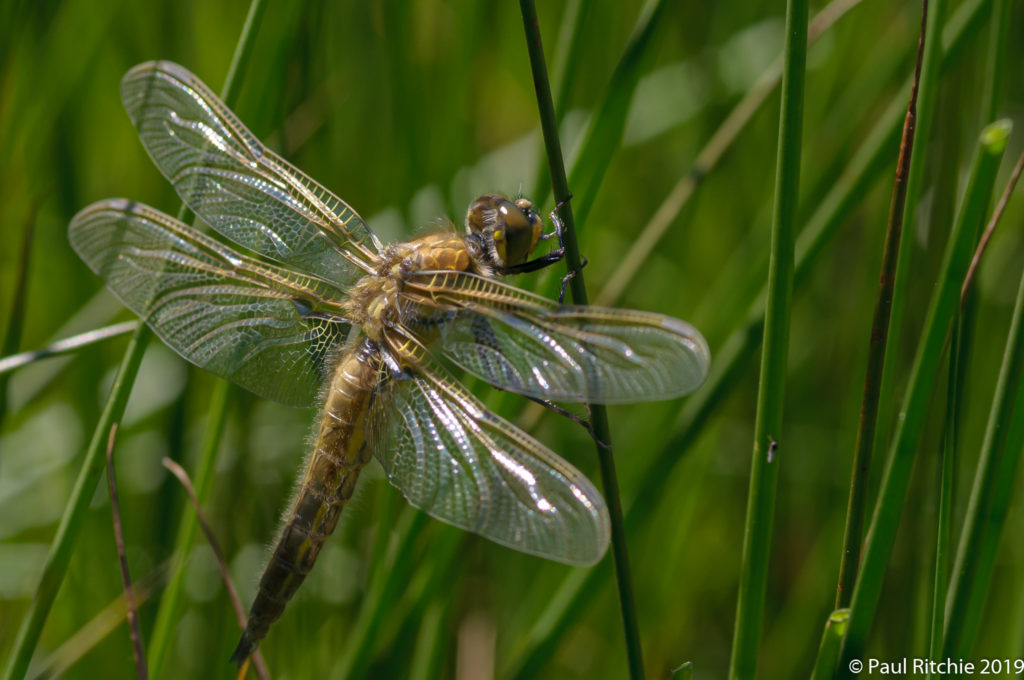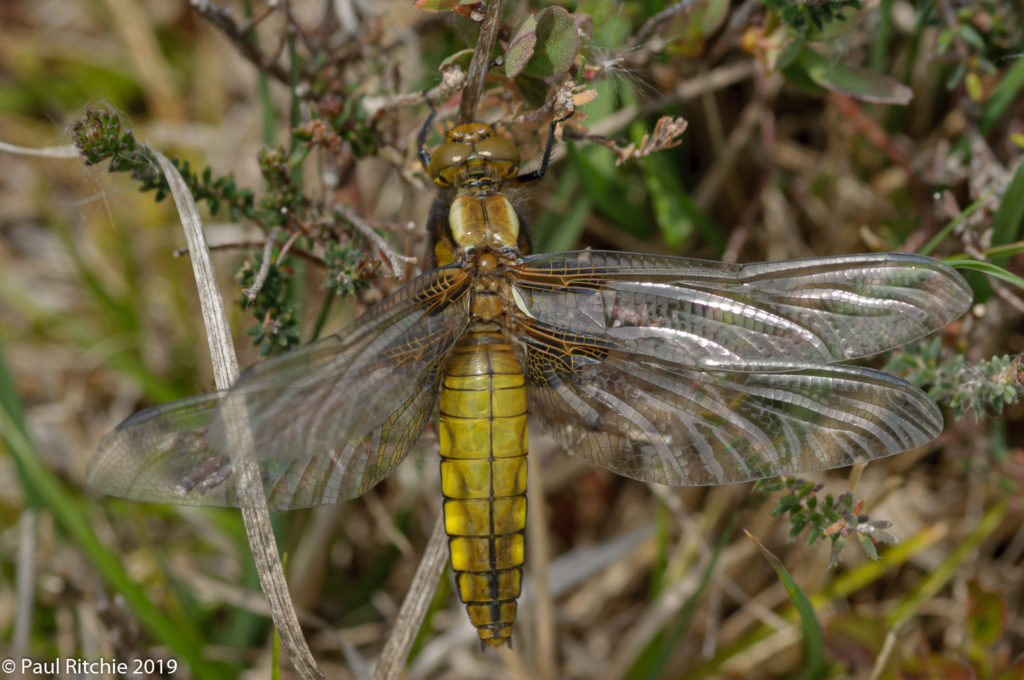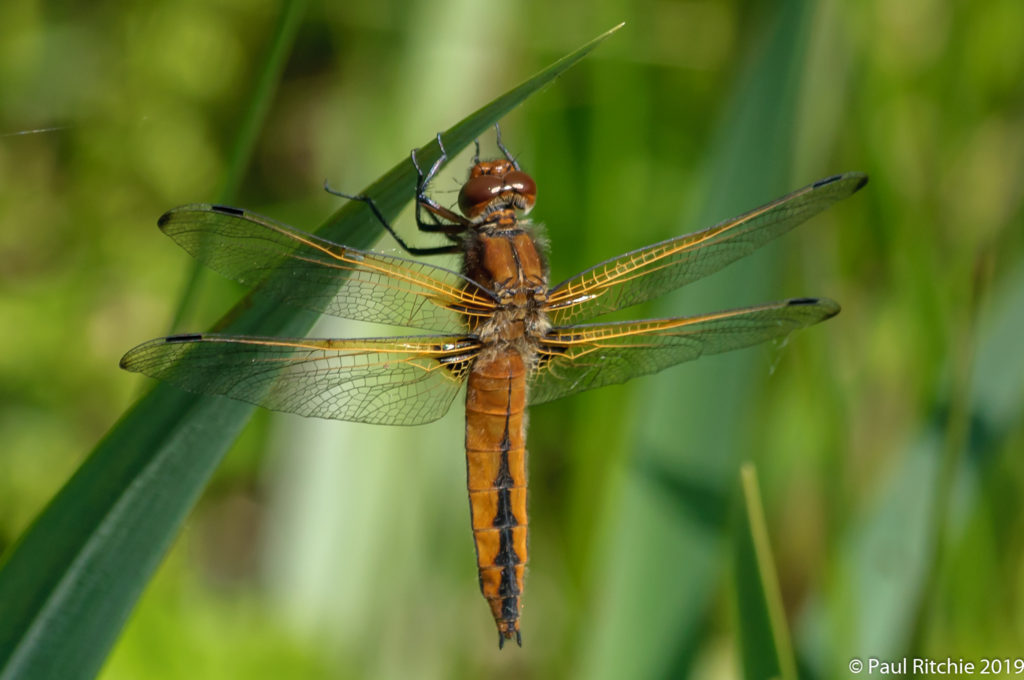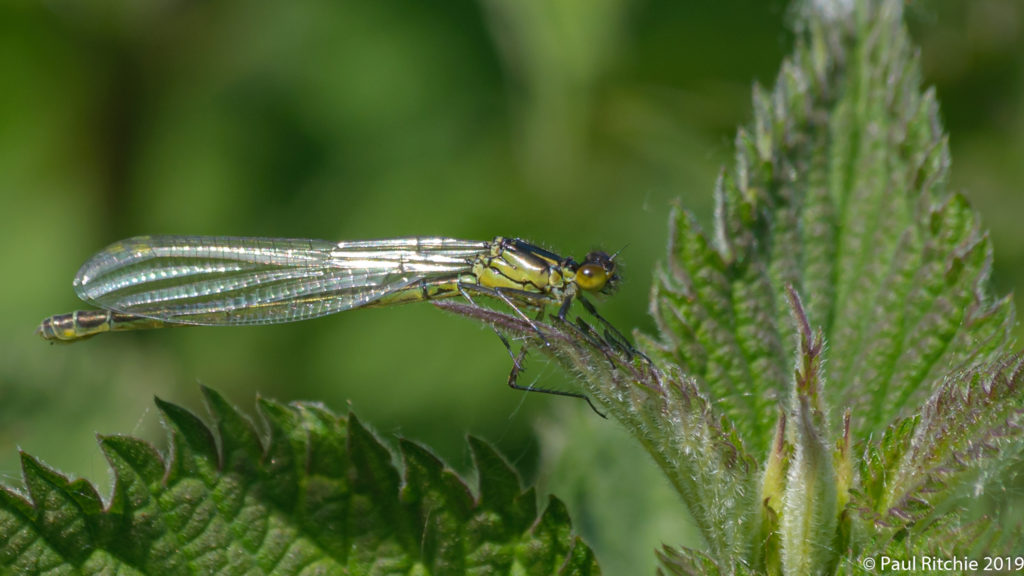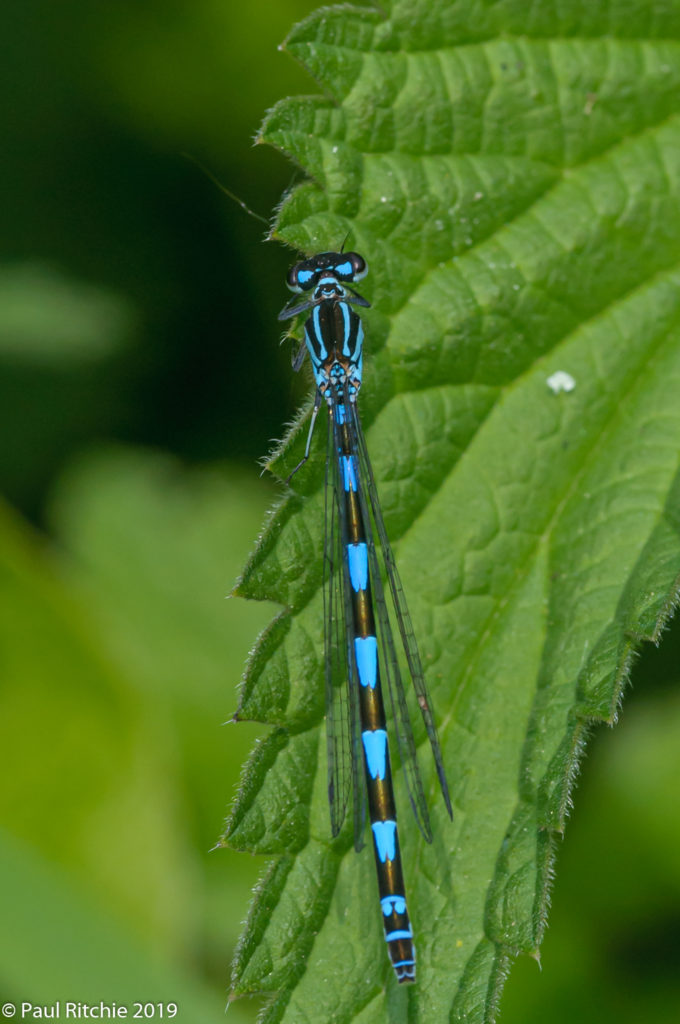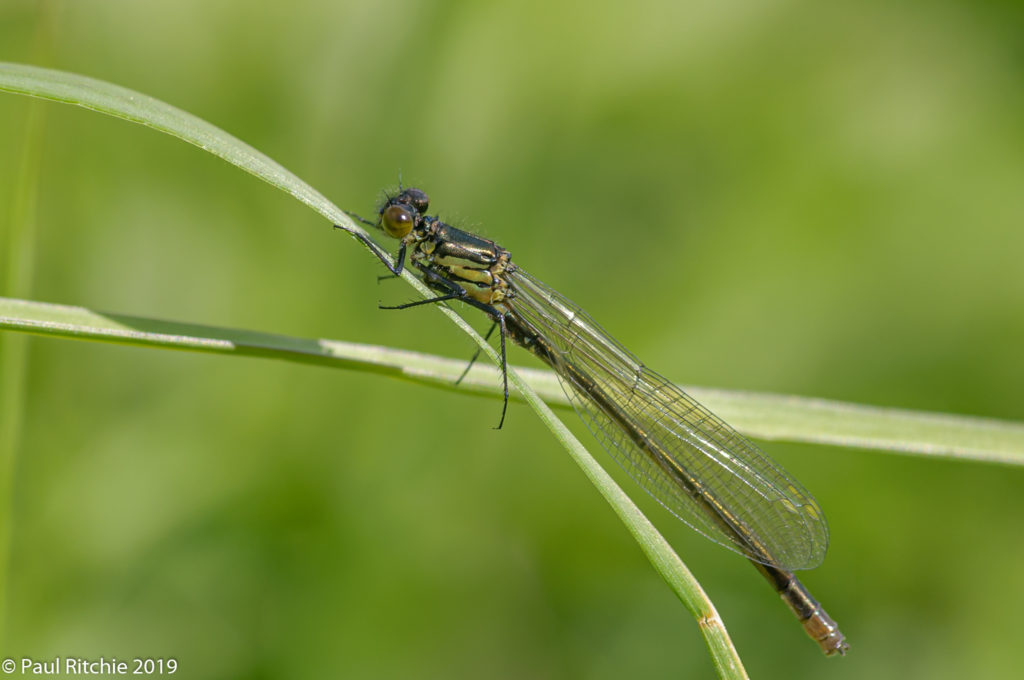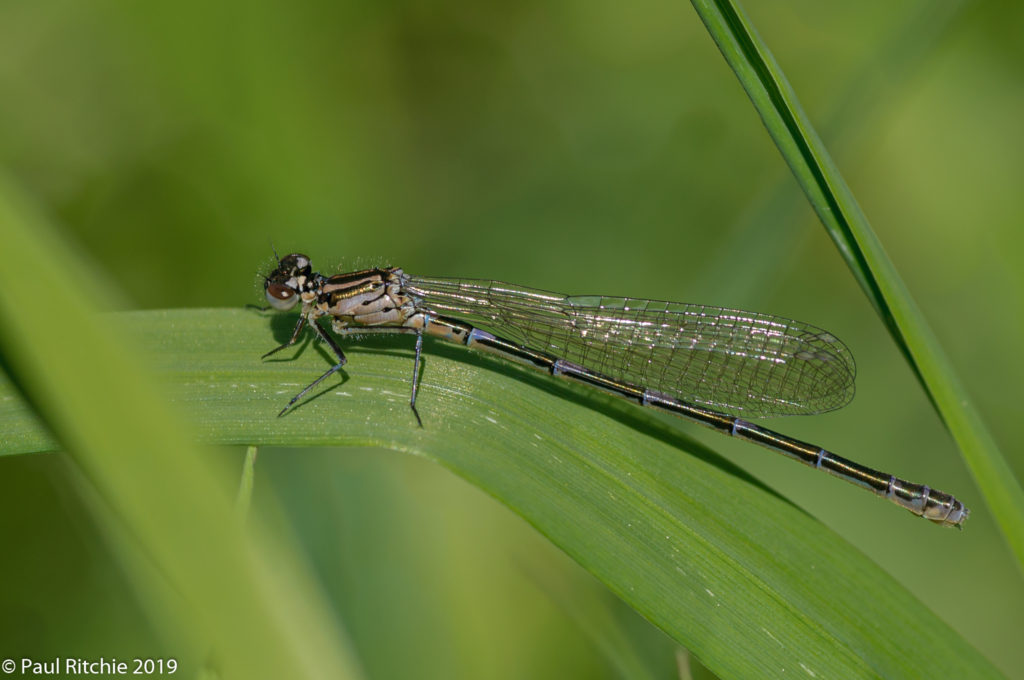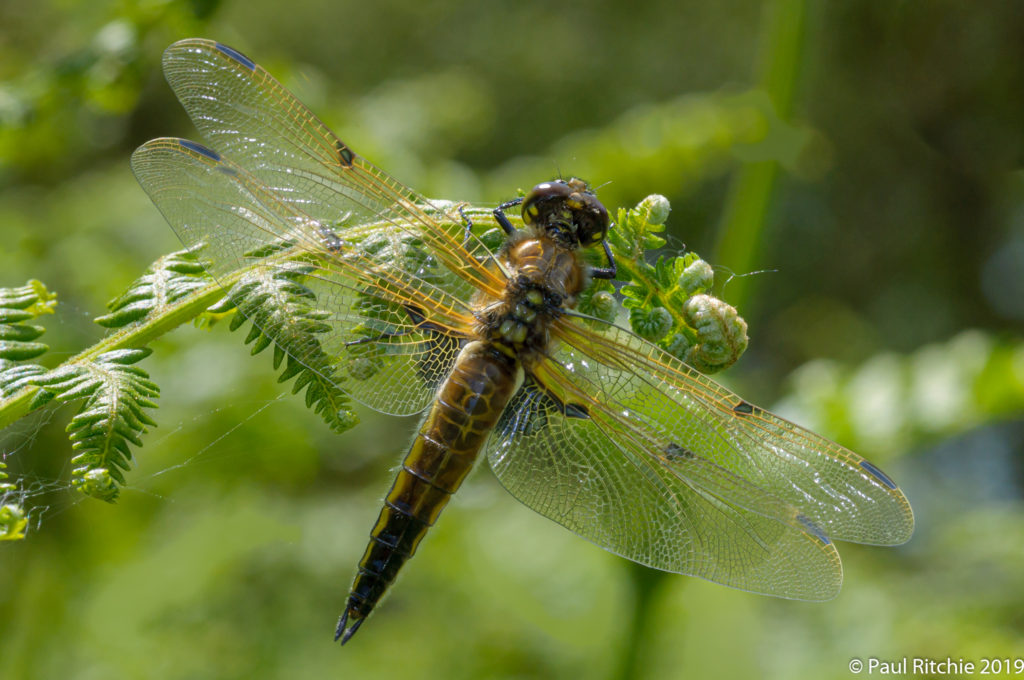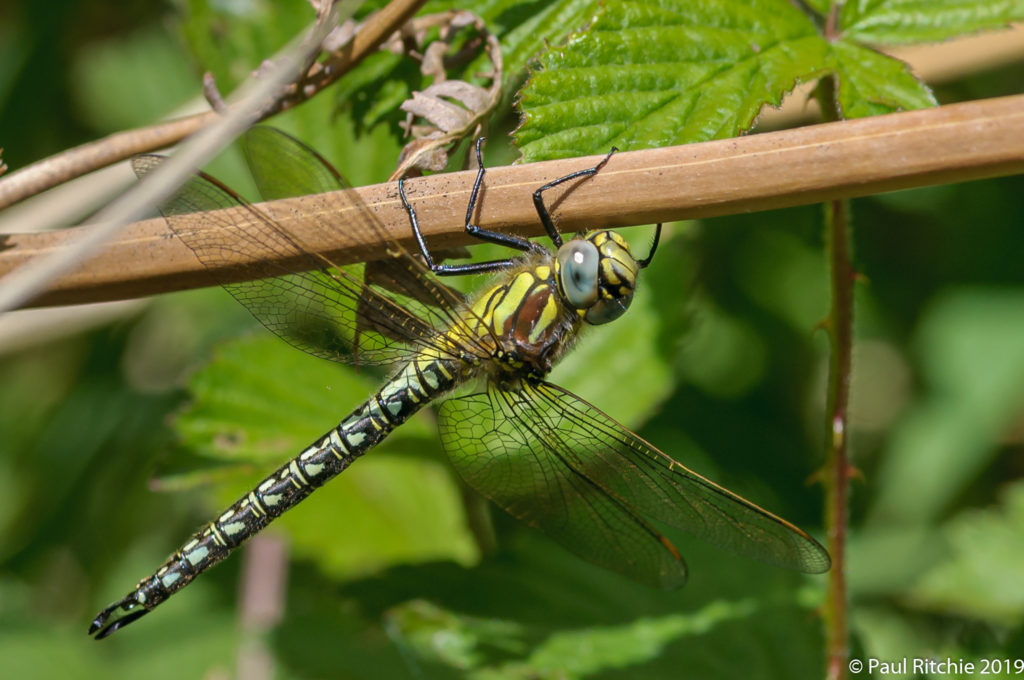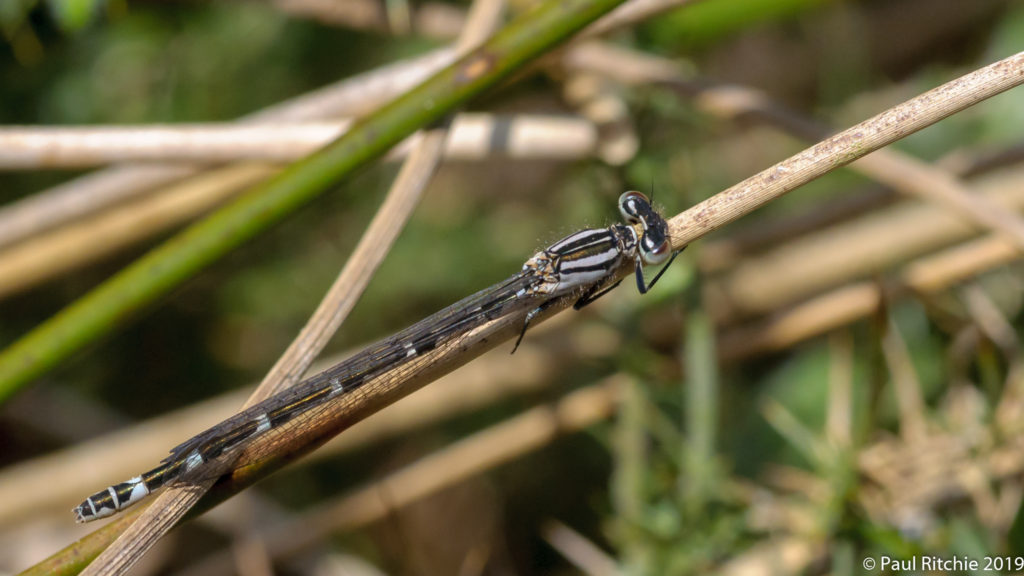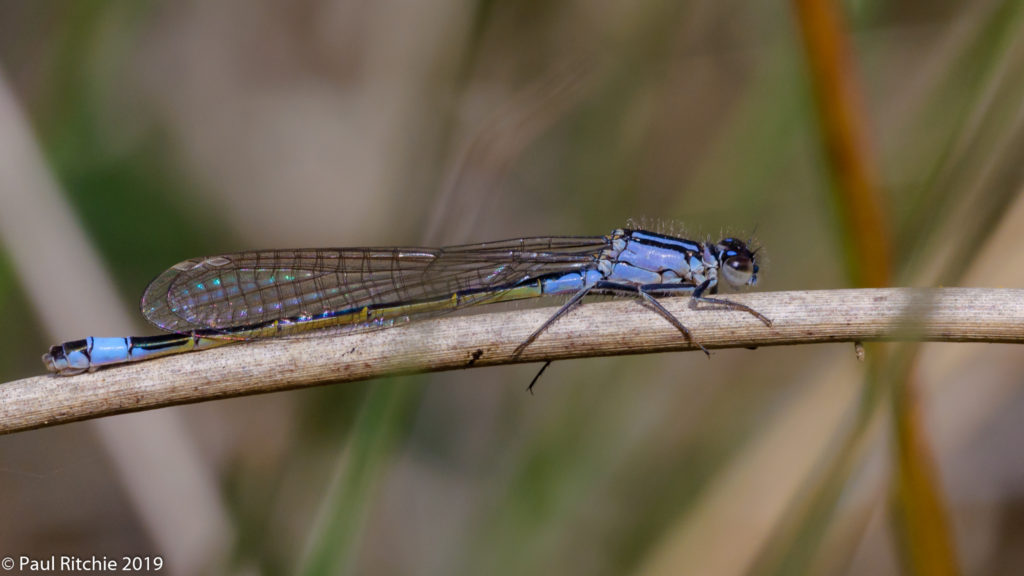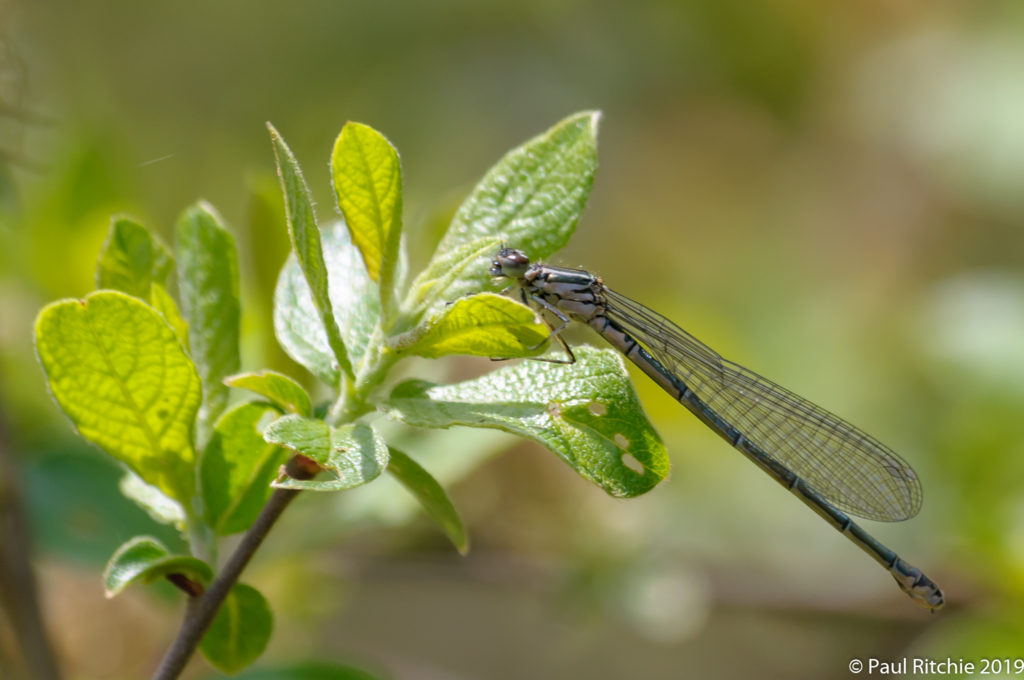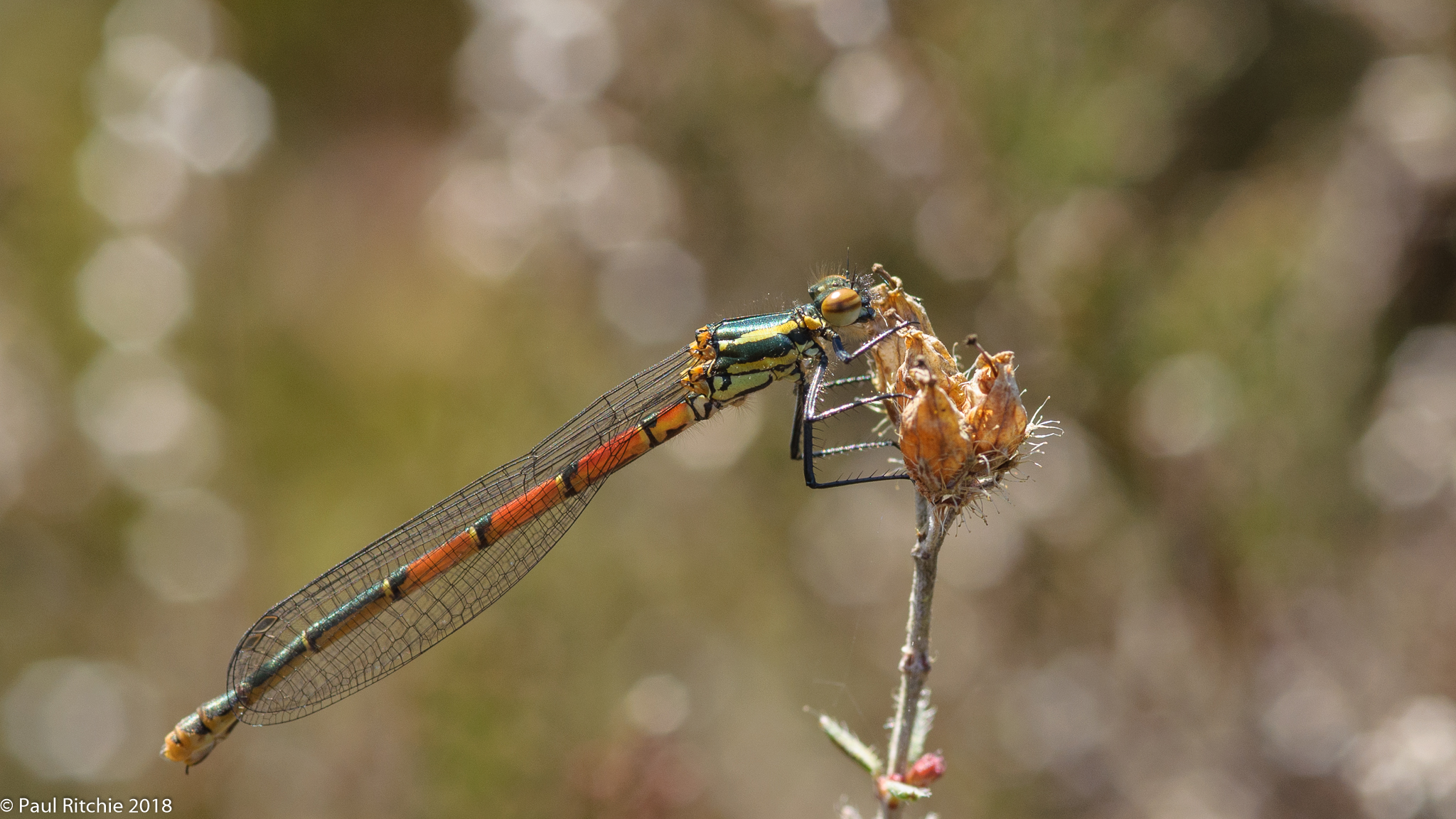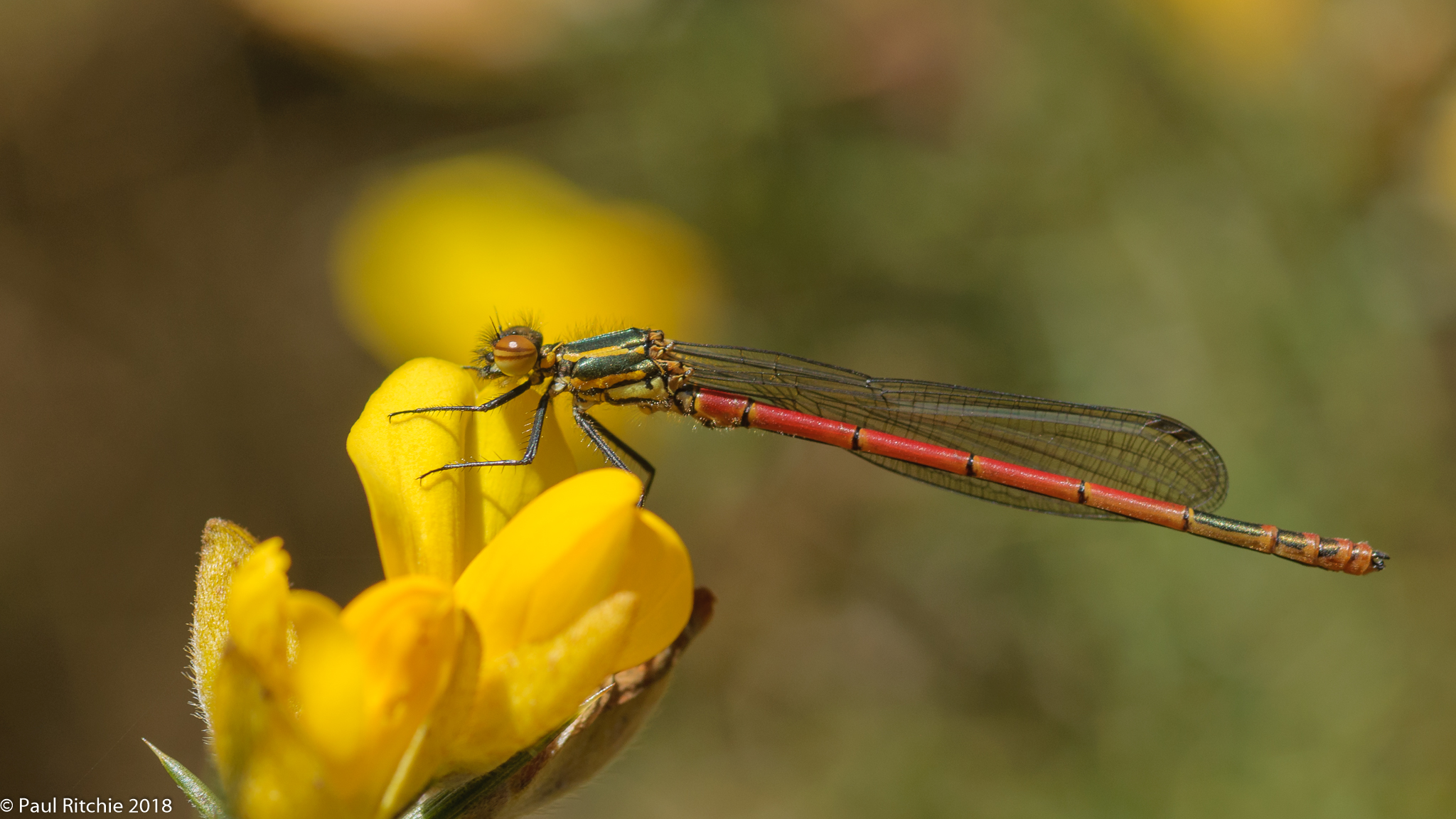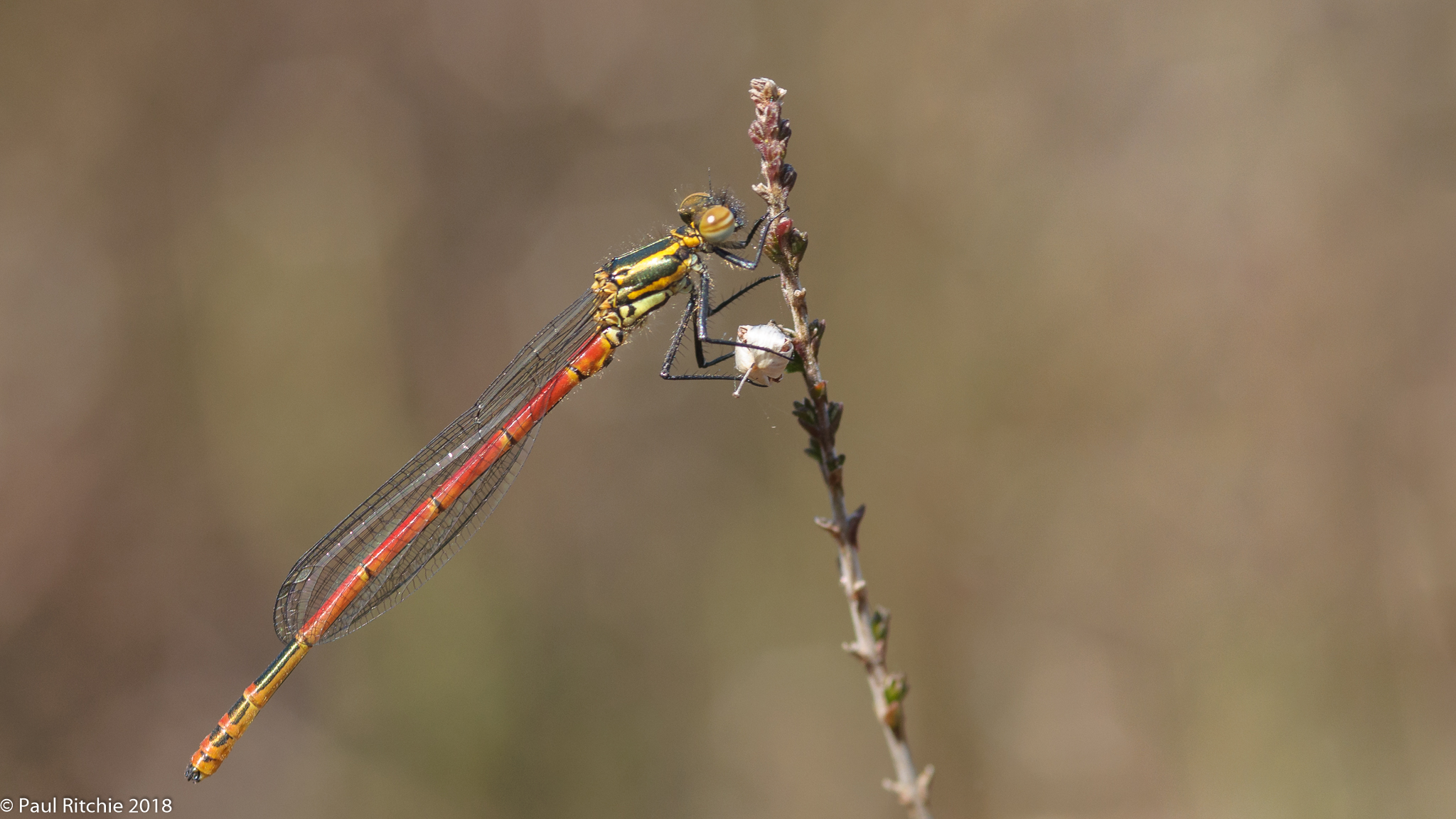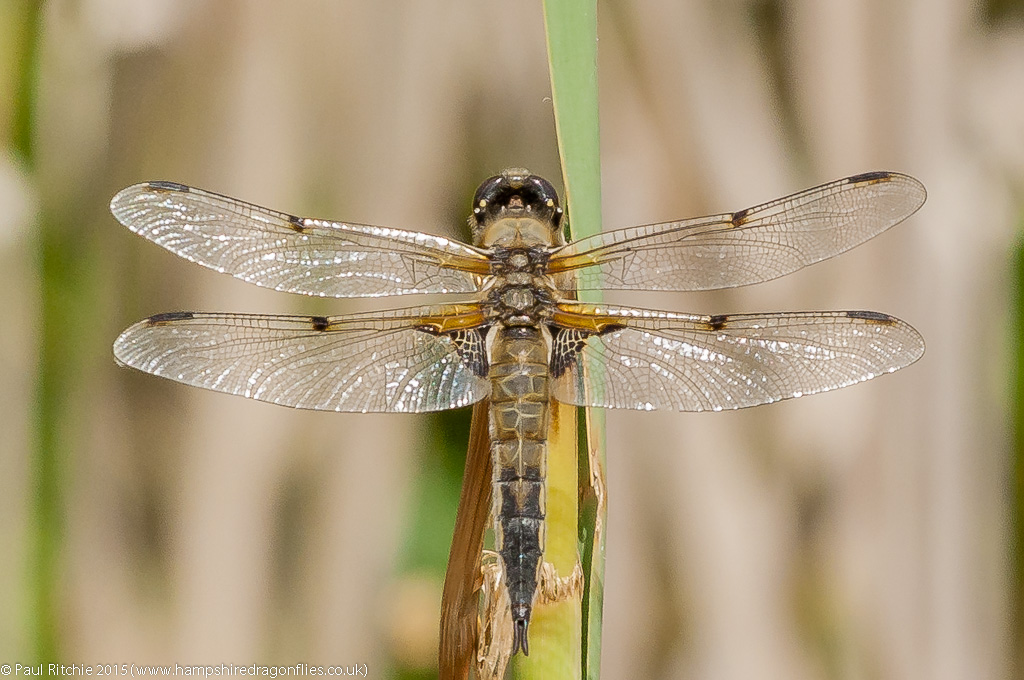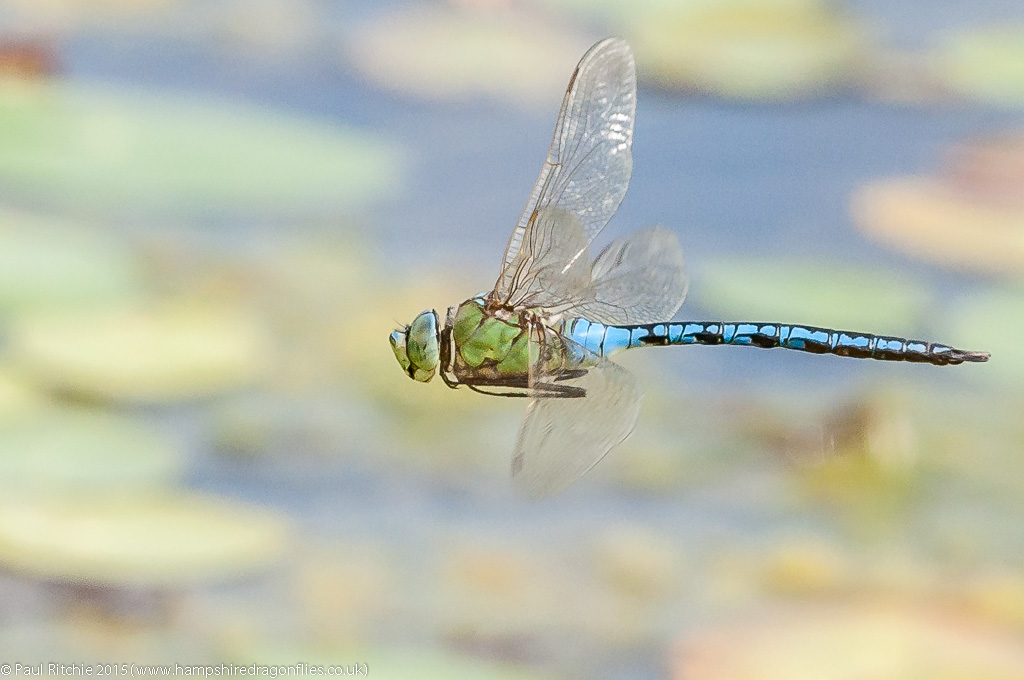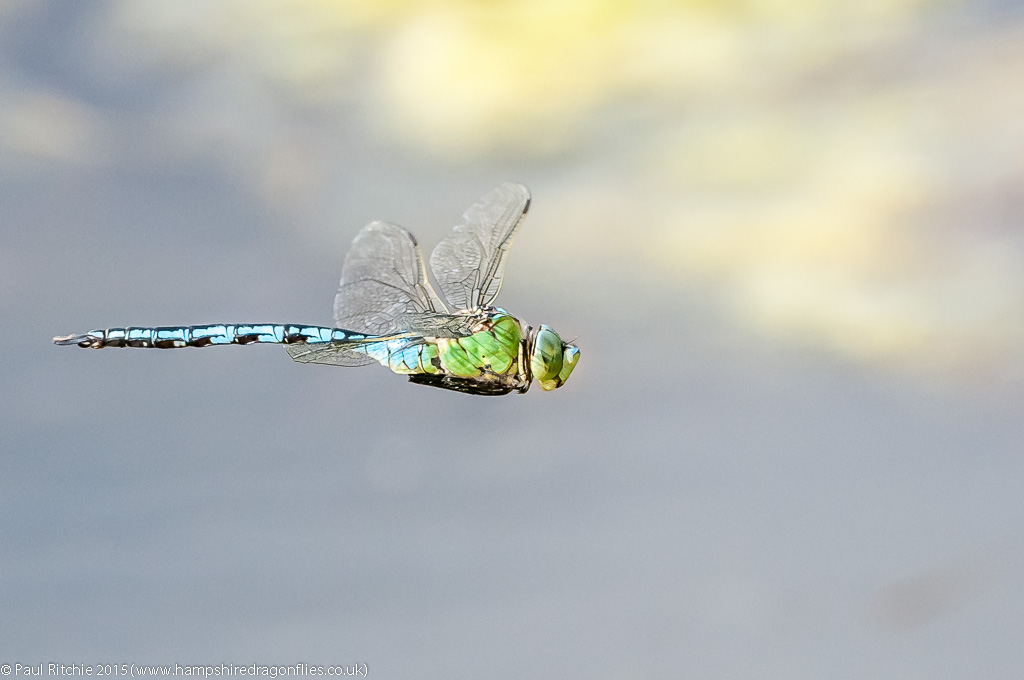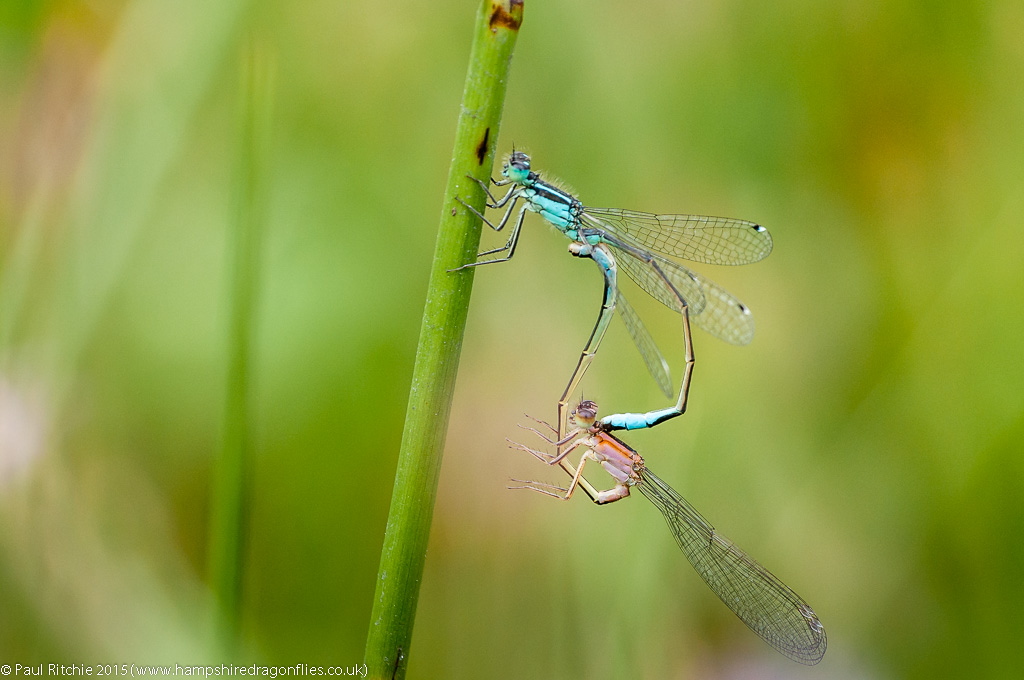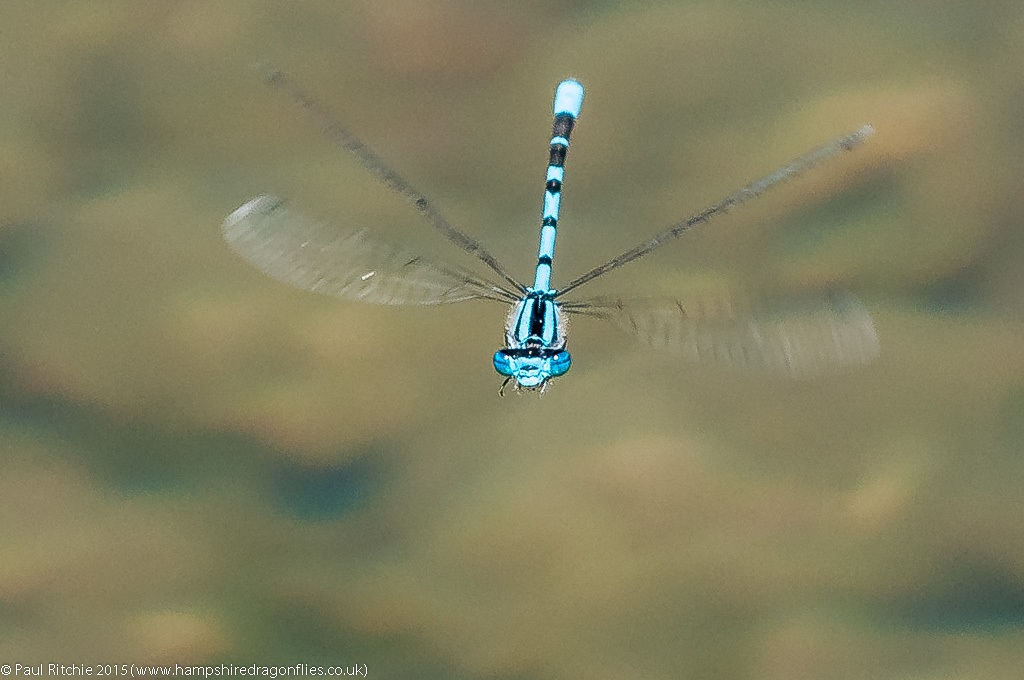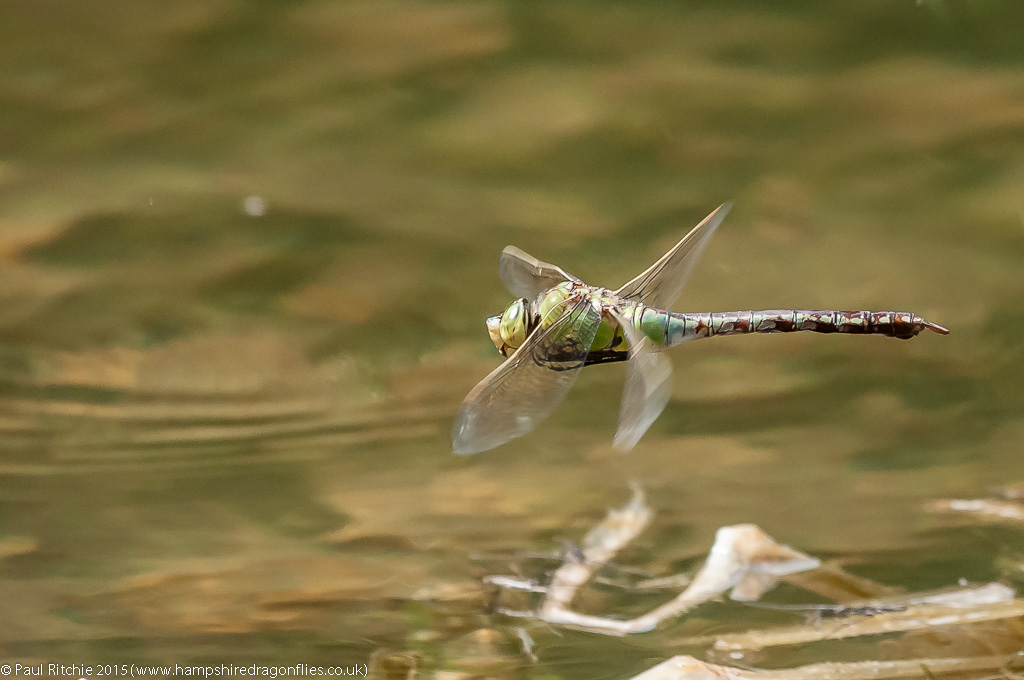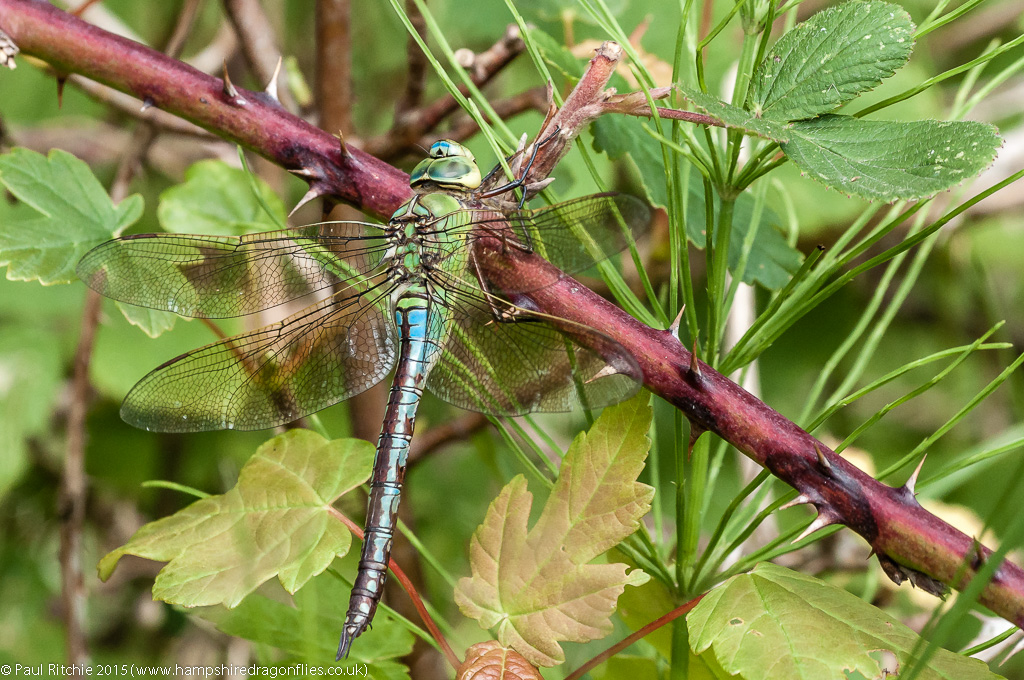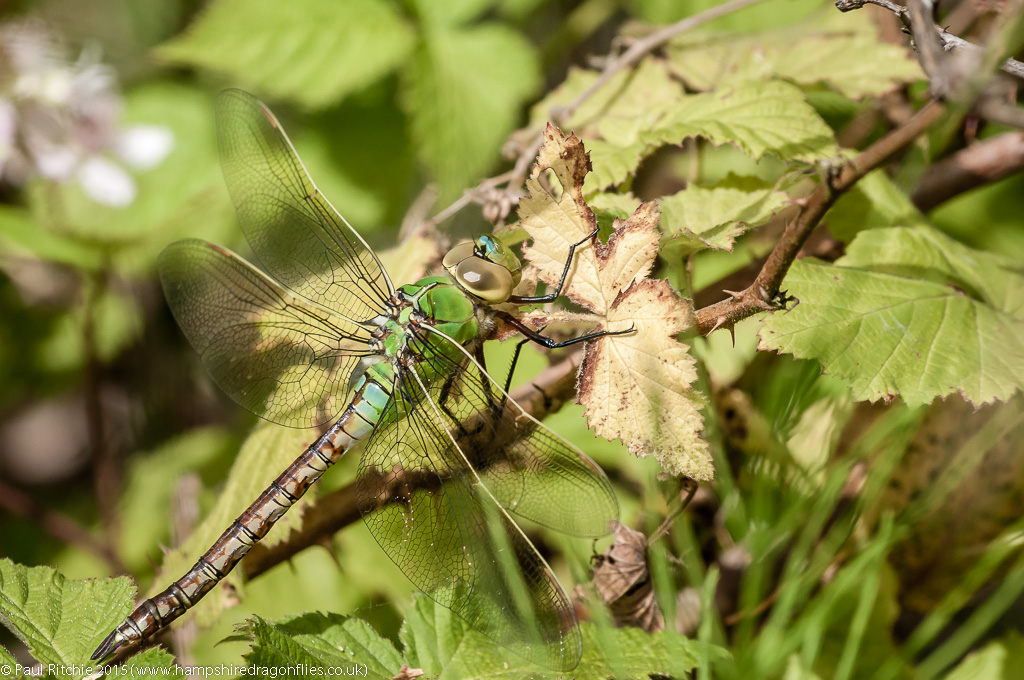Saturday 23rd June
Steve & Debbie were visiting so we agreed to meet at Crockford where the target for the day was the fabulous Golden-ringed dragonfly. A few Keeled Skimmers, Southern and Small Red Damselflies along with a scattering of Beautiful Demoiselles populated the brighter sections of the stream.
At the clearing we caught our first sight of our quarry. A male was holding territory and returned often to his favourite perch, a Bog Myrtle sapling rising from the stream.
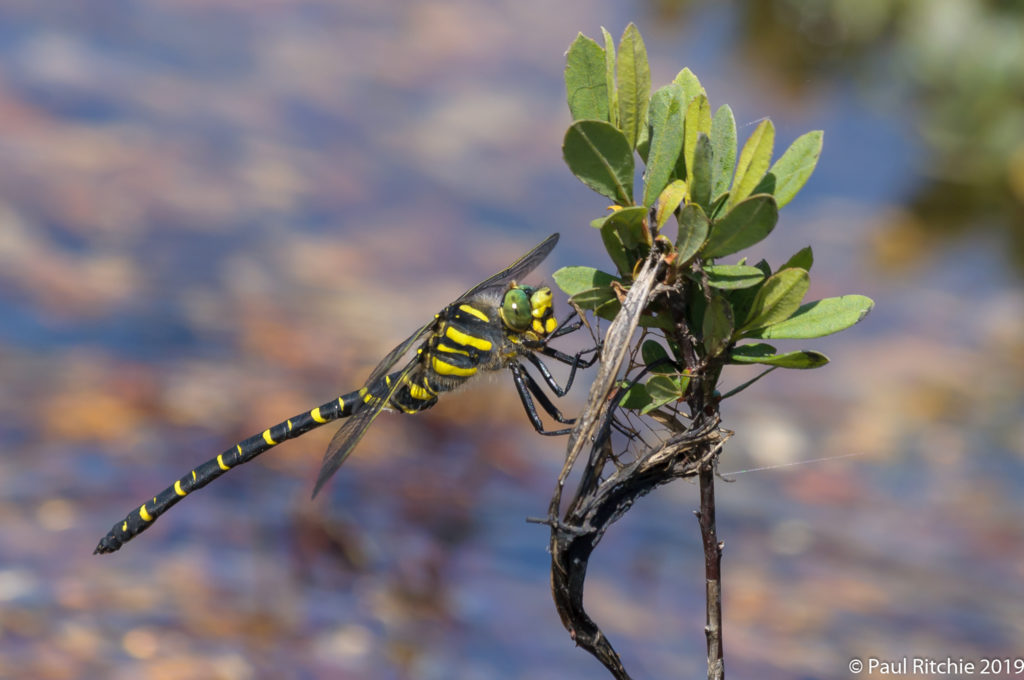
Tenerals still rising from the stream confirmed this was still early in the season here. Besides we’ve only had a break in the weather for a couple of days, and experience had taught me we need a few more days to tempt them out of their slumber.
Across on the shallow pond an Emperor was holding court while upstream revealed a few more and some Broad-bodied Chasers. I was somewhat alarmed to notice the feeder stream was exceptionally dry. Even in the height of last season’s heatwave the flow was more substantial than this, and we’ve had a lot of rain recently.
At my favourite spot we found another couple of Golden-ringed. An Emperor flew in and in the ensuing battle the Emperor retreated after getting a good ducking. Never underestimate the Golden-ringed!
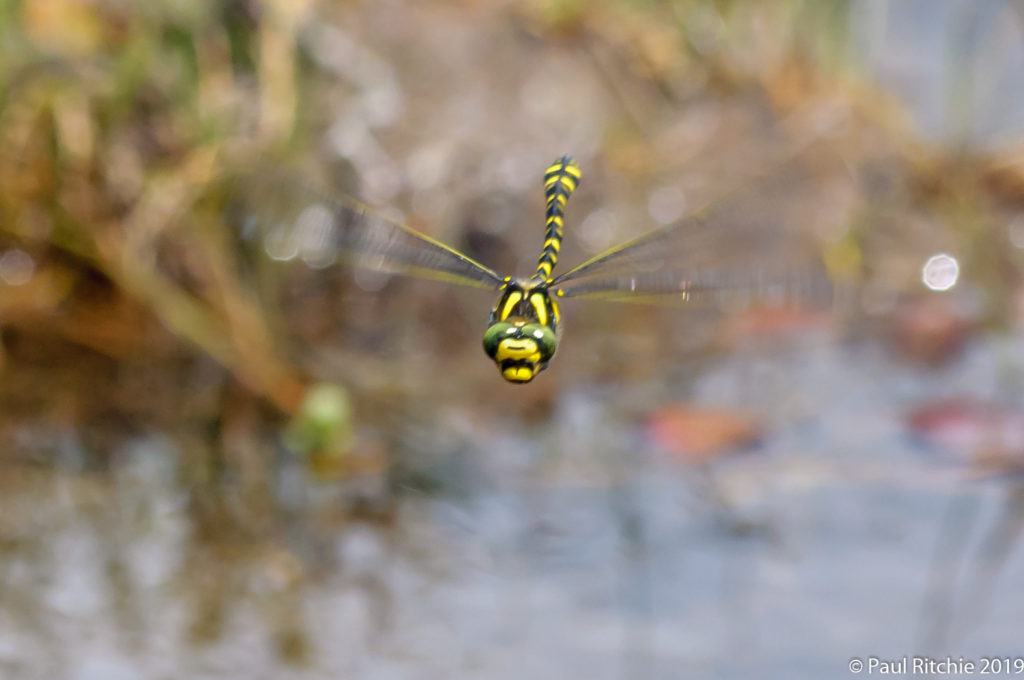
After his victory he was rewarded by the presence of a female which he grabbed and took off across the heath with. Despite extensive searching of the place we thought they dropped we failed to locate them.
Now the problem with pairings is you lose one of your subjects. This wouldn’t have been a problem if we had found the pair but thankfully we managed to locate another a further upstream who was rather accommodating,
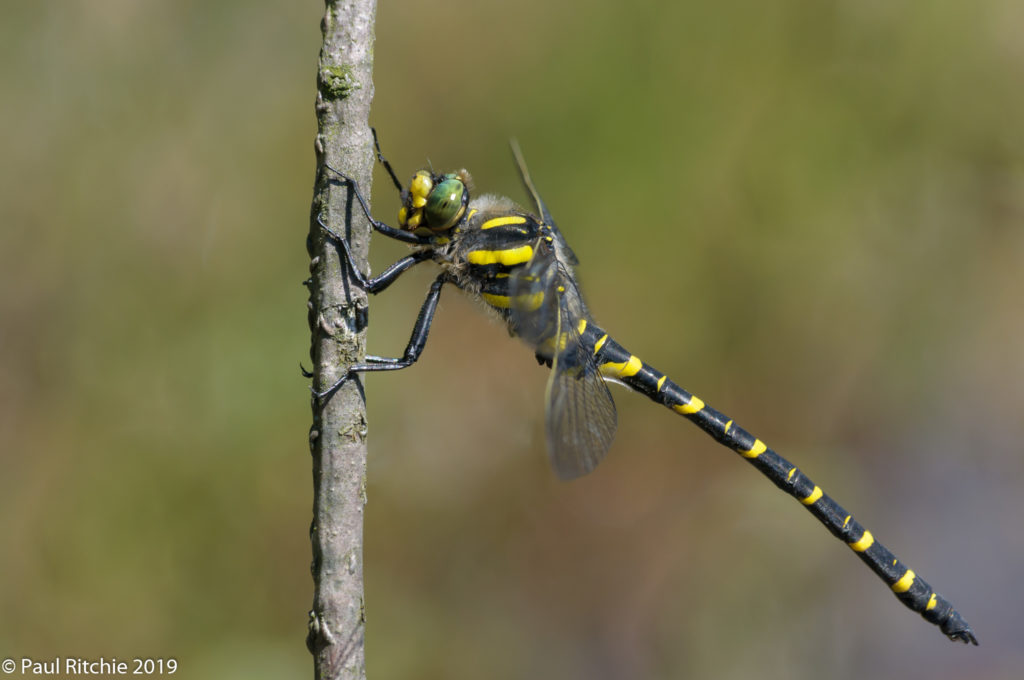
When disturbed by our clumsiness, or a bothersome Keeled Skimmer, he flew back & forth along a short section of his territory which allowed a little more skill testing.
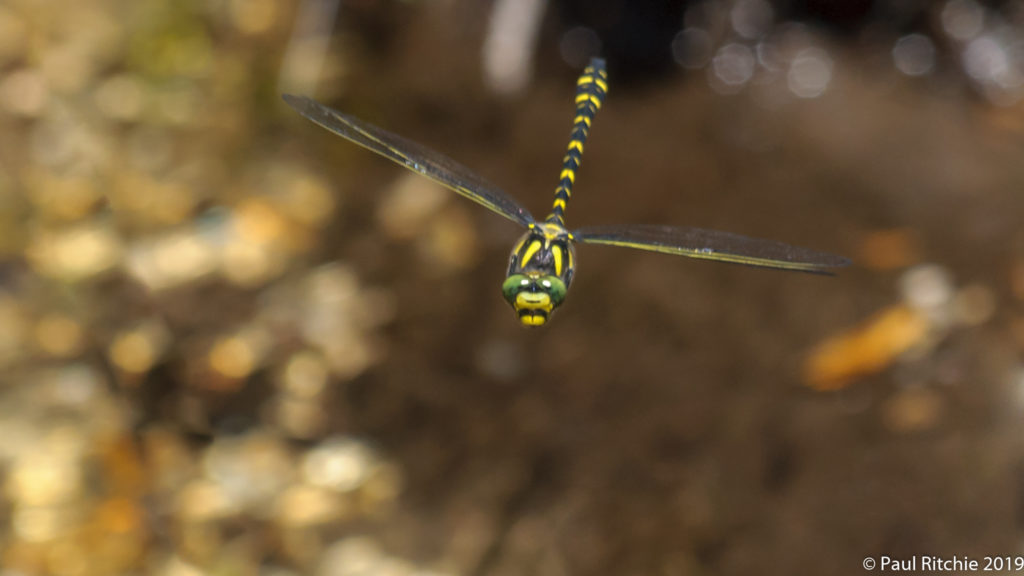
The view in the viewfinder was promising for the next shot, but in my haste I’d failed to notice he’d passed behind some bog myrtle!
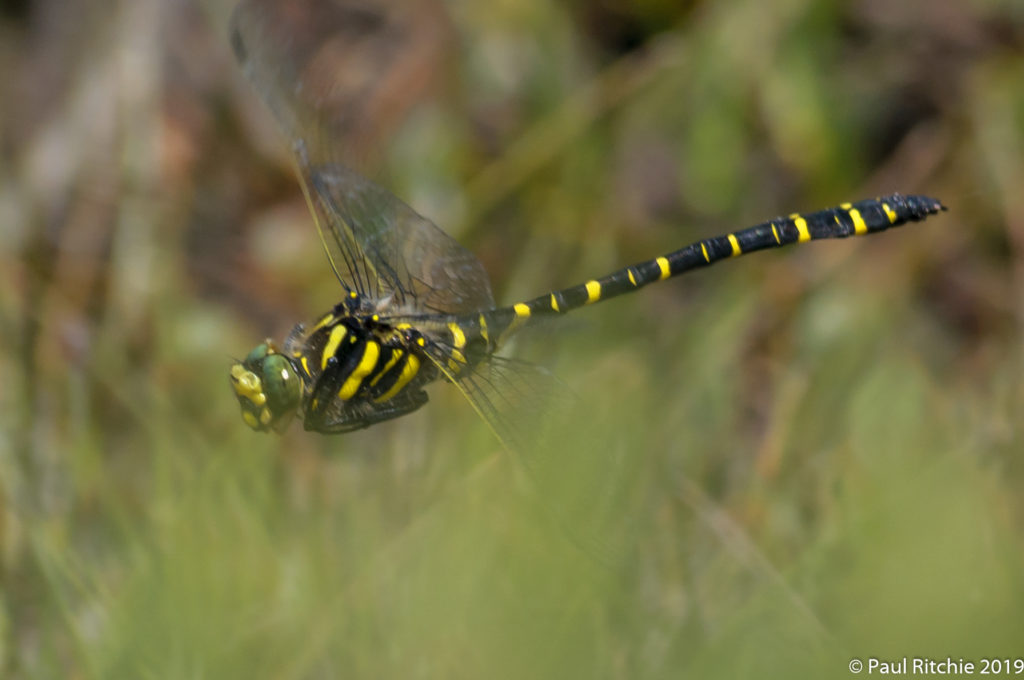
Just after this fail was captured we had a visit from the local cattle herd, who managed to tear up the stream bed and turn the crystal clear waters into a channel of sludge which no self-respecting dragon or damsel would call home. A temporary, but necessary disturbance, without which we wouldn’t have the Southern Damselfly.
We moved back downstream and had a few more fleeting glimpses before things quietened down. As always an enjoyable day in pleasant company, not least those fabulous Golden-ringed.
Couple of the cows were rather confrontational though…

